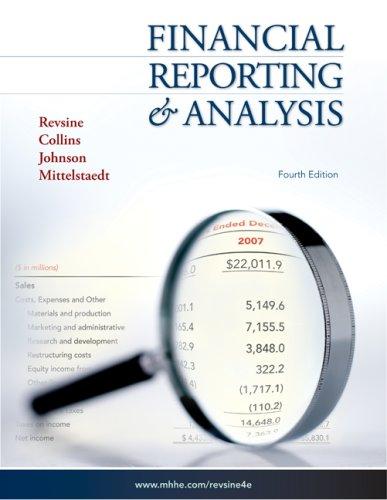The 2006 annual report of Tupperware Brands Inc. contained the following note: During 2006, the Company renegotiated
Question:
The 2006 annual report of Tupperware Brands Inc. contained the following note:
During 2006, the Company renegotiated a line of credit with a financial institution in Australia... . The Credit Agreement contains covenants of a similar nature to those under the previous agreement and customary for similarly rated companies. While the covenants are restrictive and could inhibit the Company’s ability to borrow, to pay dividends, acquire its own stock or make capital investments in its business, this is not currently expected to occur.
The primary financial covenants are a fixed charge coverage ratio, a leverage ratio and an adjusted net worth requirement. The covenant restrictions include adjusted covenant earnings and net worth measures that are non-GAAP measures. The non-GAAP measures may not be comparable to similarly titled measures used by other entities and exclude unusual, non-recurring gains, certain non-cash charges and changes in accumulated other comprehensive income. . . .
The Company’s fixed charge ratio is required to be in excess of 1.05 through September 29, 2007 at which point the requirement becomes more difficult to meet as it increases to 1.20 and then increases annually after the end of each fiscal third quarter until it increases to 1.50 after the end of the third quarter of 2010...
Required:
1. Why do loan agreements contain financial covenants that use non-GAAP measures?
2. Why are nonrecurring gains excluded from the financial covenant measure?
3. Why are nonrecurring losses included?
4 . The fixed coverage charge covenant becomes more difficult to meet over time. How does this covenant feature provide added protection for the lender?
5. Based only on the information in the Tupperware Brands note, would you say that the company is characterized by high or low credit risk? Why?
Step by Step Answer:






